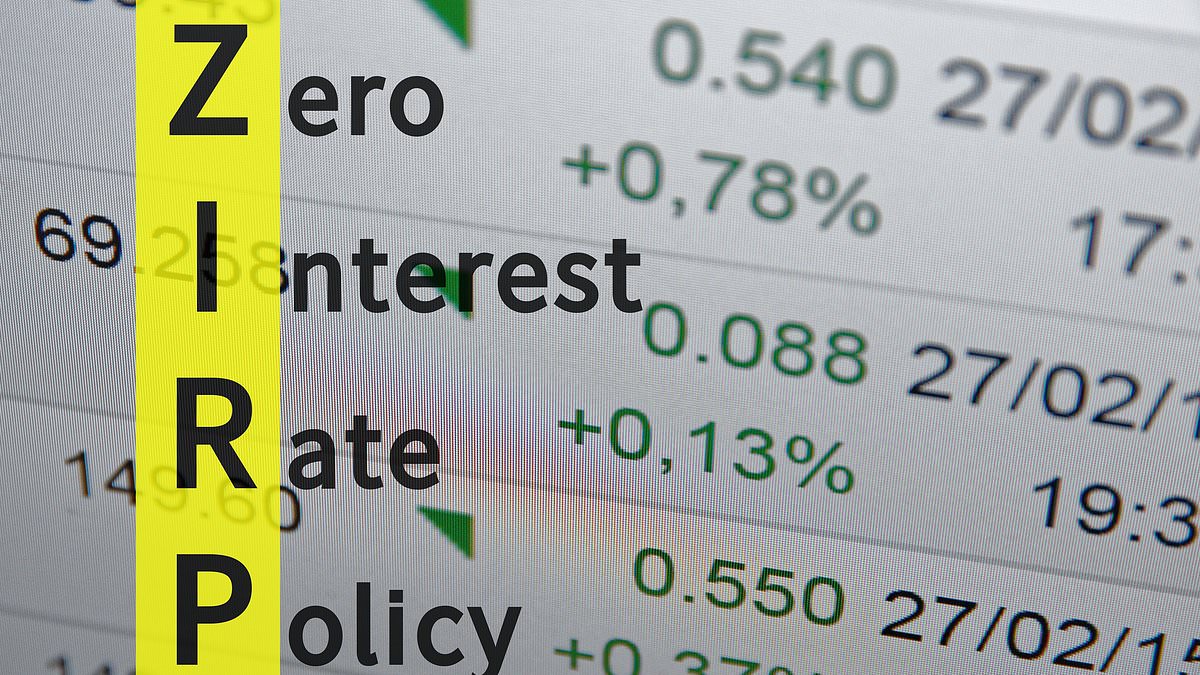In this series, we bust the jargon and explain a popular investing term or theme. Here it’s zirp.
What is this?
Zirp stands for zero interest rate policy, under which central banks, like the Bank of England and the US Federal Reserve, ‘the Fed’, reduce interest rates to zero, or very close to this level.
The strategy – which aims to lower borrowing costs and boost capital investment and personal consumption – was first deployed by the Bank of Japan in the 1990s. But it was widely adopted in the wake of the global financial crisis.
How was the policy enacted?
In 2008, the Fed, seeking to combat recession, cut rates to 0.25 per cent, in a historic move that marked the beginning of the zirp era.
On this side of the Atlantic, the Bank cut the base rate to 0.5 per cent in March 2009. As the pandemic took hold in March 2020, it trimmed the rate further to 0.1 per cent.
Strategy: Zirp stands for zero interest rate policy, under which central banks, like the Bank of England and the US Federal Reserve, reduce interest rates to zero, or very close to this level
Why are we reading about this?
In the new era of ‘higher-for- longer’ rates, we are facing up to the long-term impact of the sugar rush of easy credit. Zirp got us through a difficult economic time. But there were consequences.
One US commentator said recently: ‘They say the good things in life are free. That may be true of walks on the beach or picnics in the park. It is not true of money.’
What were these adverse effects?
Critics cite the increase in wealth inequality. The affluent could take out deeply-discounted loans to acquire property and stocks.
As a result, asset prices were inflated – perhaps unsustainably. But the lower paid had much less access to cheap credit.
Also, their wages did not rise, which eroded their purchasing power – not great for them or the economy – and jobs were lost when predatory private equity groups used cheap loans to acquire UK companies.
Any others?
The tech industry exploited the conditions created by zirp to take on workers and diversify into areas such as the metaverse.
Meta Platforms, the Facebook and Instagram owner, so believed in the potential of this virtual world, that it changed its company’s name, although it now seems more interested in generative AI (artificial intelligence).
Venture capitalists splashed out billions on start-up enterprises. But these ‘Zirp babies’ face an uncertain future.
When did the downsides emerge?
The issues surfaced as interest rates began to be raised in the summer of 2022. Central banks were anxious to curb inflation, which was largely caused by zirp. Following 14 successive hikes, the base rate now stands at 5.25 per cent.
Inflationary pressures may be lessening and some lenders are offering more advantageous mortgage rates.
But higher interest rates have had a damaging effect on consumers and the housing market, and made businesses think twice about expenditure on new projects. Rents have soared, as landlords passed on extra borrowing costs to tenants.
Will rates go Up or down next?
Views are split on whether the Bank will raise rates again next month, but there is almost universal assent that rates will not move downwards until late 2024.
This is also the conviction in the US, although the Fed may not order another hike at its rate-setting meeting next week.
